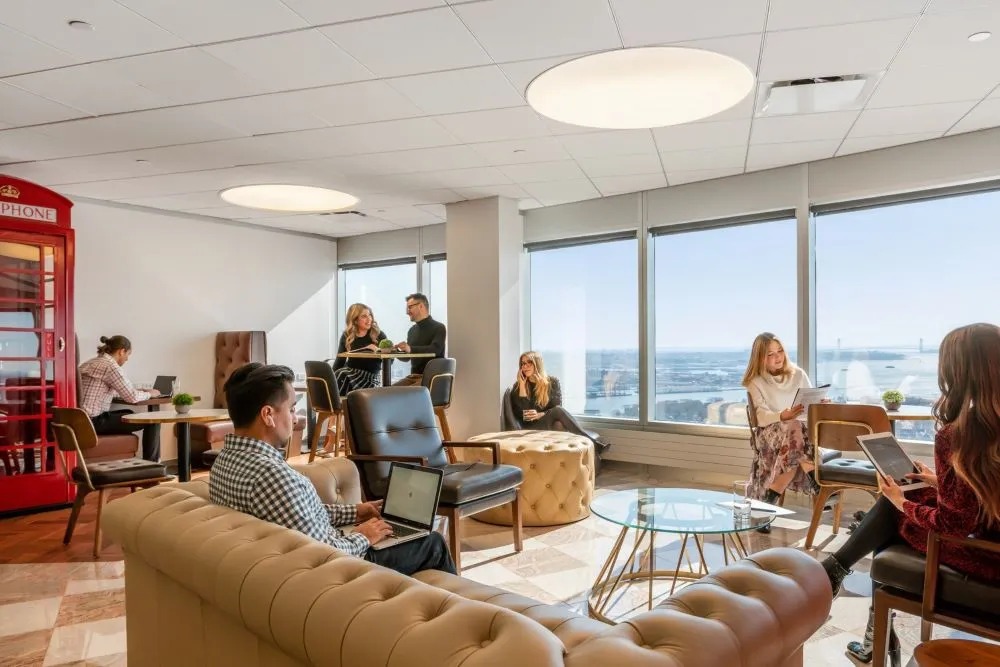Businesses operating today face immense pressures to adapt. Traditional nine-to-five office setups are giving way to more flexible and dynamic arrangements; to remain productive businesses must find the best-shared office spaces to foster collaboration and productivity.
The Rise of Remote Work
Remote work has seen an extraordinary upsurge recently, due to technological innovations and changing perspectives about work-life balance. Working from anywhere has granted employees newfound freedom from traditional office spaces; liberating employees to focus solely on individual productivity while at the same time contributing towards creating more satisfied and motivated workforce members.
Businesses stand to benefit significantly from remote work arrangements, as it reduces overhead costs associated with maintaining physical office spaces. Yet while this arrangement offers numerous advantages for business, remote working arrangements also pose unique challenges: maintaining team cohesion and cultivating an identity among remote employees can be daunting feats. Their lack of face-to-face interactions could lead to feelings of isolation that impede effective collaboration; businesses must use strategies and technology to bridge that divide to foster an engaged remote workforce.
Emergence of Hybrid Work Models
Responding to the challenges presented by remote work, businesses have increasingly turned towards hybrid work models as an interim solution. Such hybrid models combine remote working flexibility with occasional office visits – giving employees of these hybrid models both benefits – remote working autonomy combined with face-to-face collaboration opportunities in an office environment while still enjoying its convenience. Hybrid models acknowledge physical presence’s role in spurring creativity, innovation, and team cohesion.
By offering employees the flexibility of selecting where and when they work, businesses can meet individual preferences while still guaranteeing essential in-person interactions aren’t lost. However, for hybrid work models to succeed requires planning and consideration from businesses; guidelines, communication channels, and technology infrastructure need to support seamless collaboration among remote and in-office teams for maximum productivity, creativity, and employee satisfaction. With the appropriate approach hybrid work models can open new levels of productivity, creativity, and employee happiness!
The Role of Coworking Spaces
Coworking spaces offer businesses looking for flexible office arrangements a cost-effective and innovative alternative. More than simply desks and chairs, coworking spaces create vibrant communities of professionals from diverse backgrounds who come together to work and collaborate – encouraging creativity, innovation, and serendipitous encounters as well as accessing invaluable networking opportunities within them.
Technological Advancements
From remote collaboration tools to AI integration in everyday operations, technology has revolutionized traditional workflows and processes for businesses of all types. Now they have access to tools that facilitate easy communication, collaboration, and productivity across both traditional and virtual work environments; geographical barriers become obsolete while teams collaborate seamlessly across borders and time zones with no physical restrictions whatsoever. Furthermore, technological innovations have increased efficiency while streamlining operations allowing organizations to adapt quickly in this digital era while remaining competitive within it.
Technological advancements offer businesses many tangible advantages; however, implementation and integration must be handled strategically to take full advantage of them. Adopting new technologies requires careful planning, investment, training, and implementation within your organization to ensure successful adoption and utilization across your entire enterprise. Businesses also must remain vigilant against cybersecurity threats such as data breaches as their increased reliance on tech presents them with new risks that require prioritizing cybersecurity measures with robust protocols to safeguard sensitive information while upholding business continuity.
Adaptability and Flexibility
With technological innovation accelerating at lightning speed, evolving consumer tastes evolving, and market dynamics shifting fast enough that successful businesses must adopt an adaptable and flexible business approach to adapt and stay a step ahead of competition in an ever-evolving landscape. By cultivating an environment of adaptability and flexibility they can stay ahead of competitors as new opportunities for growth emerge and seize them before their competition does!
At the core of adaptation lies an organizational culture that encourages innovation and experimentation with novel ways of working, prioritizing creativity over convention to respond quickly to emerging trends and capitalize on market opportunities. Furthermore, ongoing training and development play an integral part in creating adaptability within organizations.
Conclusion
The future of work can be unpredictable and uncertain; by adapting to emerging trends and making use of valuable resources, businesses can position themselves for success in this ever-evolving sphere. Sharing office spaces effectively foster collaboration and creativity while coworking spaces offer invaluable networking opportunities that drive innovation and expansion. As businesses navigate this ever-shifting environment, staying informed, adaptable, and proactive will be paramount for their businesses to flourish into their next incarnation.
